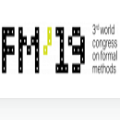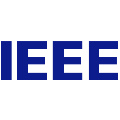Relation Extraction (RE) is a task that identifies relationships between entities in a text, enabling the acquisition of relational facts and bridging the gap between natural language and structured knowledge. However, current RE models often rely on small datasets with low coverage of relation types, particularly when working with languages other than English. In this paper, we address the above issue and provide two new resources that enable the training and evaluation of multilingual RE systems. First, we present SRED$^{\rm FM}$, an automatically annotated dataset covering 18 languages, 400 relation types, 13 entity types, totaling more than 40 million triplet instances. Second, we propose RED$^{\rm FM}$, a smaller, human-revised dataset for seven languages that allows for the evaluation of multilingual RE systems. To demonstrate the utility of these novel datasets, we experiment with the first end-to-end multilingual RE model, mREBEL, that extracts triplets, including entity types, in multiple languages. We release our resources and model checkpoints at //www.github.com/babelscape/rebel
相關內容
Dialogue relation extraction (DRE) that identifies the relations between argument pairs in dialogue text, suffers much from the frequent occurrence of personal pronouns, or entity and speaker coreference. This work introduces a new benchmark dataset DialogRE^C+, introducing coreference resolution into the DRE scenario. With the aid of high-quality coreference knowledge, the reasoning of argument relations is expected to be enhanced. In DialogRE^C+ dataset, we manually annotate total 5,068 coreference chains over 36,369 argument mentions based on the existing DialogRE data, where four different coreference chain types namely speaker chain, person chain, location chain and organization chain are explicitly marked. We further develop 4 coreference-enhanced graph-based DRE models, which learn effective coreference representations for improving the DRE task. We also train a coreference resolution model based on our annotations and evaluate the effect of automatically extracted coreference chains demonstrating the practicality of our dataset and its potential to other domains and tasks.
This paper addresses the challenges of real-time, large-scale, and near-optimal multi-agent pathfinding (MAPF) through enhancements to the recently proposed LaCAM* algorithm. LaCAM* is a scalable search-based algorithm that guarantees the eventual finding of optimal solutions for cumulative transition costs. While it has demonstrated remarkable planning success rates, surpassing various state-of-the-art MAPF methods, its initial solution quality is far from optimal, and its convergence speed to the optimum is slow. To overcome these limitations, this paper introduces several improvement techniques, partly drawing inspiration from other MAPF methods. We provide empirical evidence that the fusion of these techniques significantly improves the solution quality of LaCAM*, thus further pushing the boundaries of MAPF algorithms.
Deep neural networks have delivered remarkable performance and have been widely used in various visual tasks. However, their huge size causes significant inconvenience for transmission and storage. Many previous studies have explored model size compression. However, these studies often approach various lossy and lossless compression methods in isolation, leading to challenges in achieving high compression ratios efficiently. This work proposes a post-training model size compression method that combines lossy and lossless compression in a unified way. We first propose a unified parametric weight transformation, which ensures different lossy compression methods can be performed jointly in a post-training manner. Then, a dedicated differentiable counter is introduced to guide the optimization of lossy compression to arrive at a more suitable point for later lossless compression. Additionally, our method can easily control a desired global compression ratio and allocate adaptive ratios for different layers. Finally, our method can achieve a stable $10\times$ compression ratio without sacrificing accuracy and a $20\times$ compression ratio with minor accuracy loss in a short time. Our code is available at //github.com/ModelTC/L2_Compression .
Video-grounded dialogue systems aim to integrate video understanding and dialogue understanding to generate responses that are relevant to both the dialogue and video context. Most existing approaches employ deep learning models and have achieved remarkable performance, given the relatively small datasets available. However, the results are partly accomplished by exploiting biases in the datasets rather than developing multimodal reasoning, resulting in limited generalization. In this paper, we propose a novel approach of Compositional Counterfactual Contrastive Learning ($C^3$) to develop contrastive training between factual and counterfactual samples in video-grounded dialogues. Specifically, we design factual/counterfactual sampling based on the temporal steps in videos and tokens in dialogues and propose contrastive loss functions that exploit object-level or action-level variance. Different from prior approaches, we focus on contrastive hidden state representations among compositional output tokens to optimize the representation space in a generation setting. We achieved promising performance gains on the Audio-Visual Scene-Aware Dialogues (AVSD) benchmark and showed the benefits of our approach in grounding video and dialogue context.
This paper presents VoxelMap++: a voxel mapping method with plane merging which can effectively improve the accuracy and efficiency of LiDAR(-inertial) based simultaneous localization and mapping (SLAM). This map is a collection of voxels that contains one plane feature with 3DOF representation and corresponding covariance estimation. Considering total map will contain a large number of coplanar features (kid planes), these kid planes' 3DOF estimation can be regarded as the measurements with covariance of a larger plane (father plane). Thus, we design a plane merging module based on union-find which can save resources and further improve the accuracy of plane fitting. This module can distinguish the kid planes in different voxels and merge these kid planes to estimate the father plane. After merging, the father plane 3DOF representation will be more accurate than the kids plane and the uncertainty will decrease significantly which can further improve the performance of LiDAR(-inertial) odometry. Experiments on challenging environments such as corridors and forests demonstrate the high accuracy and efficiency of our method compared to other state-of-the-art methods (see our attached video). By the way, our implementation VoxelMap++ is open-sourced on GitHub which is applicable for both non-repetitive scanning LiDARs and traditional scanning LiDAR.
Hierarchical least-squares programs with linear constraints (HLSP) are a type of optimization problem very common in robotics. Each priority level contains an objective in least-squares form which is subject to the linear constraints of the higher priority levels. Active-set methods are a popular choice for solving them. However, they can perform poorly in terms of computational time if there are large changes of the active set. We therefore propose a computationally efficient primal-dual interior-point method (IPM) for dense HLSP's which is able to maintain constant numbers of solver iterations in these situations. We base our IPM on the computationally efficient nullspace method as it requires only a single matrix factorization per solver iteration instead of two as it is the case for other IPM formulations. We show that the resulting normal equations can be expressed in least-squares form. This avoids the formation of the quadratic Lagrangian Hessian and can possibly maintain high levels of sparsity. Our solver reliably solves ill-posed instantaneous hierarchical robot control problems without exhibiting the large variations in computation time seen in active-set methods.
Symmetric powers are an important notion in mathematics, computer science and physics. In mathematics, they are used to build symmetric algebras, in computer science, to build free exponential modalities of linear logic and in physics, Fock spaces. We study symmetric powers through the lens of category theory. We focus here on the simpler case where nonnegative rational scalars are available ie. we study symmetric powers in symmetric monoidal $\mathbb{Q}_{\ge 0}$-linear categories. Among the developments, a main point is the introduction of the notion of binomial graded bimonoid and the associated string diagrams which characterize symmetric powers in this setting.
For a large class of random constraint satisfaction problems (CSP), deep but non-rigorous theory from statistical physics predict the location of the sharp satisfiability transition. The works of Ding, Sly, Sun (2014, 2016) and Coja-Oghlan, Panagiotou (2014) established the satisfiability threshold for random regular $k$-NAE-SAT, random $k$-SAT, and random regular $k$-SAT for large enough $k\geq k_0$ where $k_0$ is a large non-explicit constant. Establishing the same for small values of $k\geq 3$ remains an important open problem in the study of random CSPs. In this work, we study two closely related models of random CSPs, namely the $2$-coloring on random $d$-regular $k$-uniform hypergraphs and the random $d$-regular $k$-NAE-SAT model. For every $k\geq 3$, we prove that there is an explicit $d_{\ast}(k)$ which gives a satisfiability upper bound for both of the models. Our upper bound $d_{\ast}(k)$ for $k\geq 3$ matches the prediction from statistical physics for the hypergraph $2$-coloring by Dall'Asta, Ramezanpour, Zecchina (2008), thus conjectured to be sharp. Moreover, $d_{\ast}(k)$ coincides with the satisfiability threshold of random regular $k$-NAE-SAT for large enough $k\geq k_0$ by Ding, Sly, Sun (2014).
Click-through rate (CTR) prediction plays a critical role in recommender systems and online advertising. The data used in these applications are multi-field categorical data, where each feature belongs to one field. Field information is proved to be important and there are several works considering fields in their models. In this paper, we proposed a novel approach to model the field information effectively and efficiently. The proposed approach is a direct improvement of FwFM, and is named as Field-matrixed Factorization Machines (FmFM, or $FM^2$). We also proposed a new explanation of FM and FwFM within the FmFM framework, and compared it with the FFM. Besides pruning the cross terms, our model supports field-specific variable dimensions of embedding vectors, which acts as soft pruning. We also proposed an efficient way to minimize the dimension while keeping the model performance. The FmFM model can also be optimized further by caching the intermediate vectors, and it only takes thousands of floating-point operations (FLOPs) to make a prediction. Our experiment results show that it can out-perform the FFM, which is more complex. The FmFM model's performance is also comparable to DNN models which require much more FLOPs in runtime.
Graph convolution networks (GCN) are increasingly popular in many applications, yet remain notoriously hard to train over large graph datasets. They need to compute node representations recursively from their neighbors. Current GCN training algorithms suffer from either high computational costs that grow exponentially with the number of layers, or high memory usage for loading the entire graph and node embeddings. In this paper, we propose a novel efficient layer-wise training framework for GCN (L-GCN), that disentangles feature aggregation and feature transformation during training, hence greatly reducing time and memory complexities. We present theoretical analysis for L-GCN under the graph isomorphism framework, that L-GCN leads to as powerful GCNs as the more costly conventional training algorithm does, under mild conditions. We further propose L^2-GCN, which learns a controller for each layer that can automatically adjust the training epochs per layer in L-GCN. Experiments show that L-GCN is faster than state-of-the-arts by at least an order of magnitude, with a consistent of memory usage not dependent on dataset size, while maintaining comparable prediction performance. With the learned controller, L^2-GCN can further cut the training time in half. Our codes are available at //github.com/Shen-Lab/L2-GCN.




